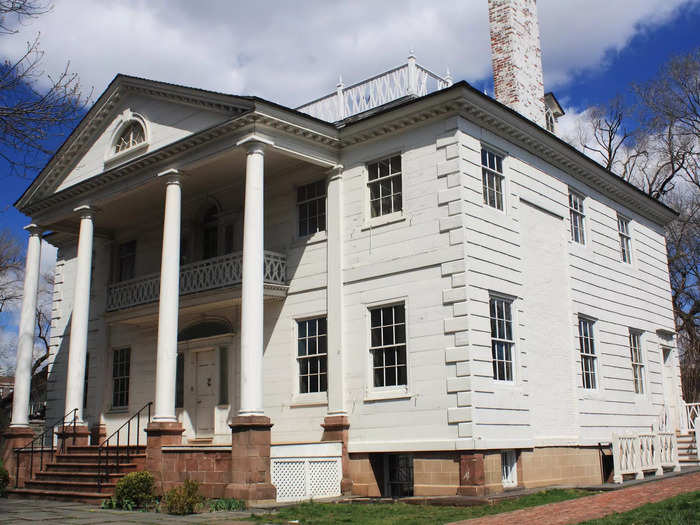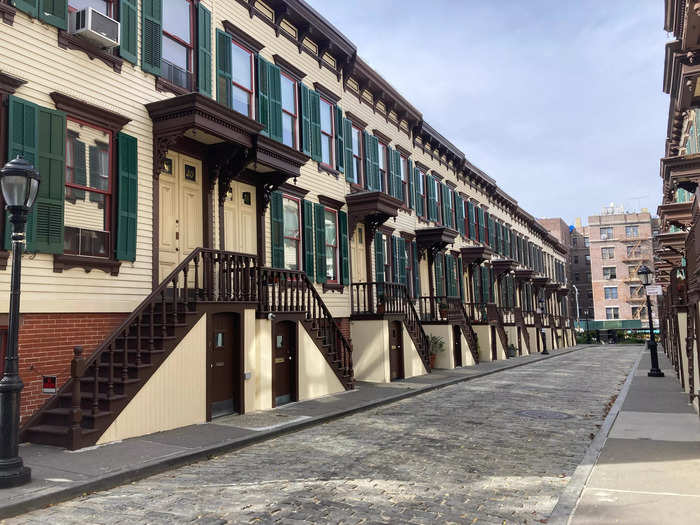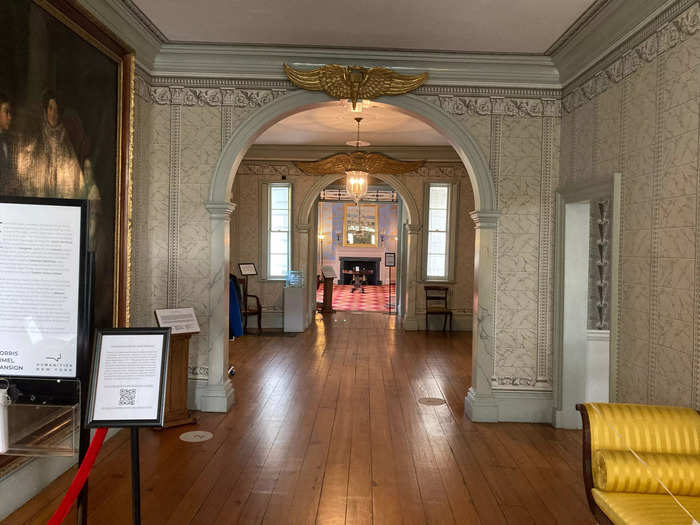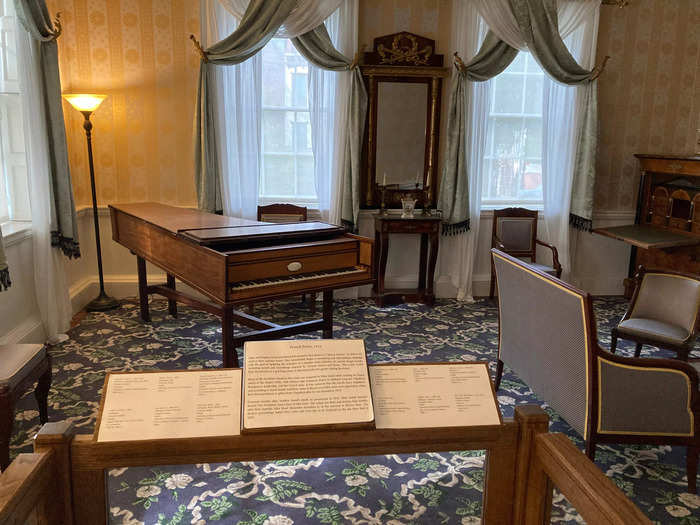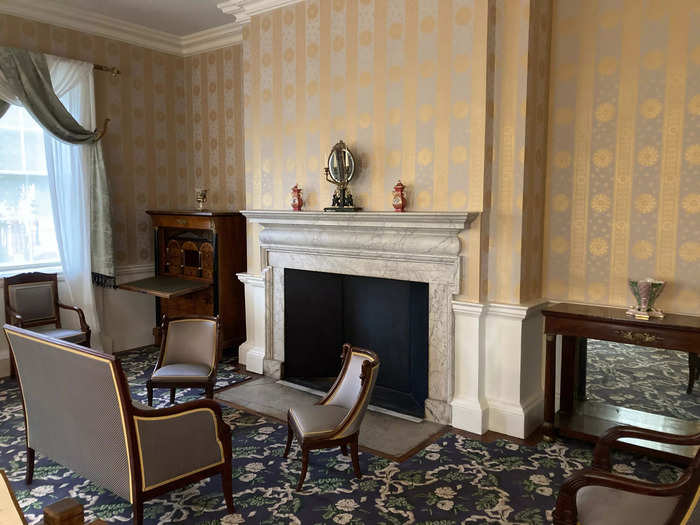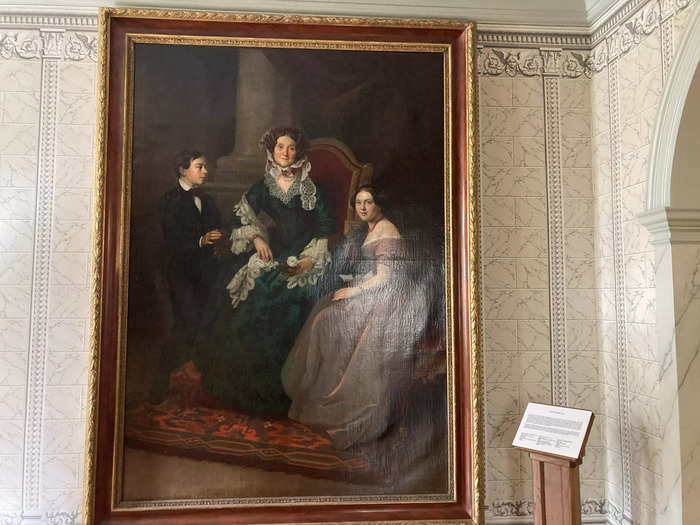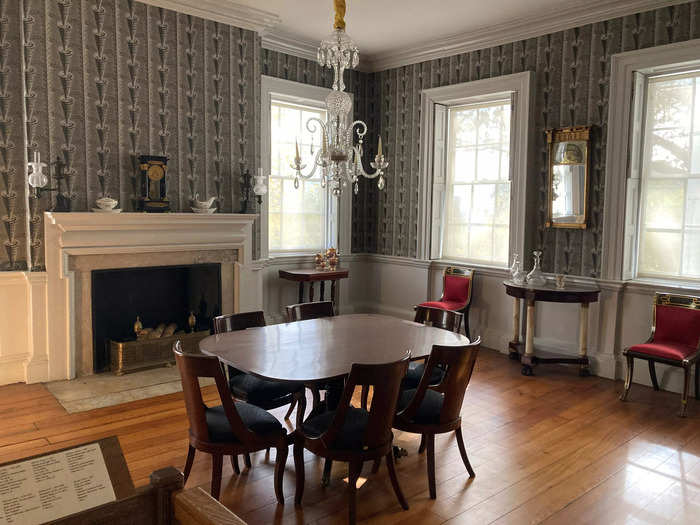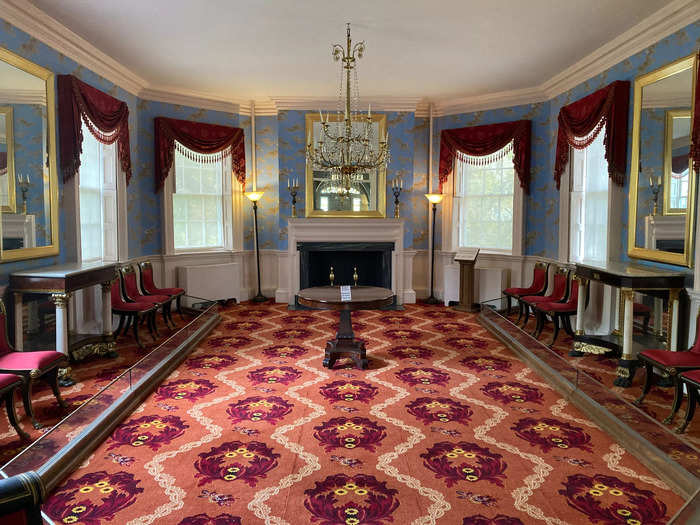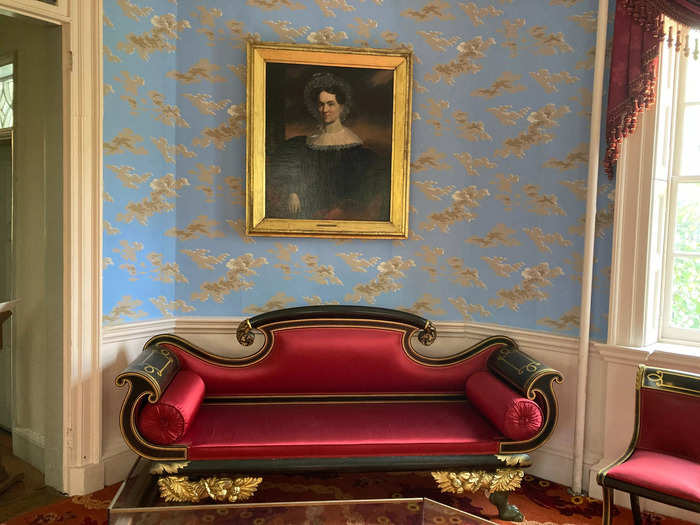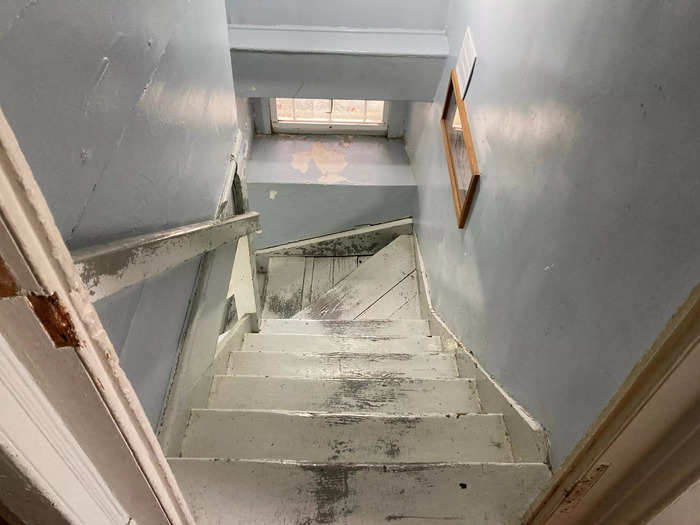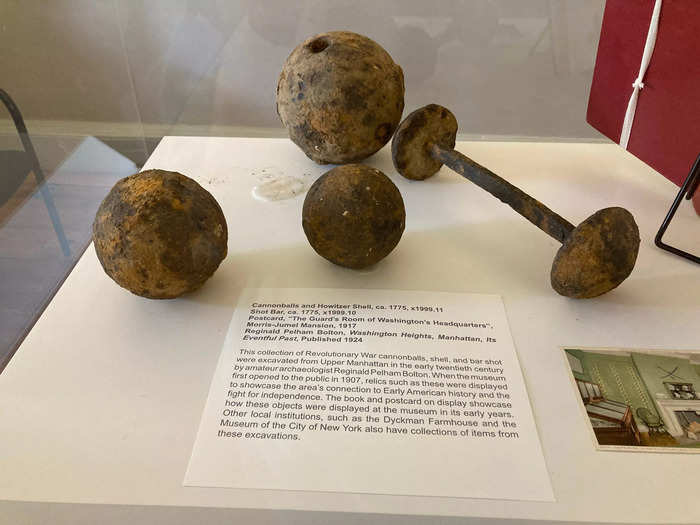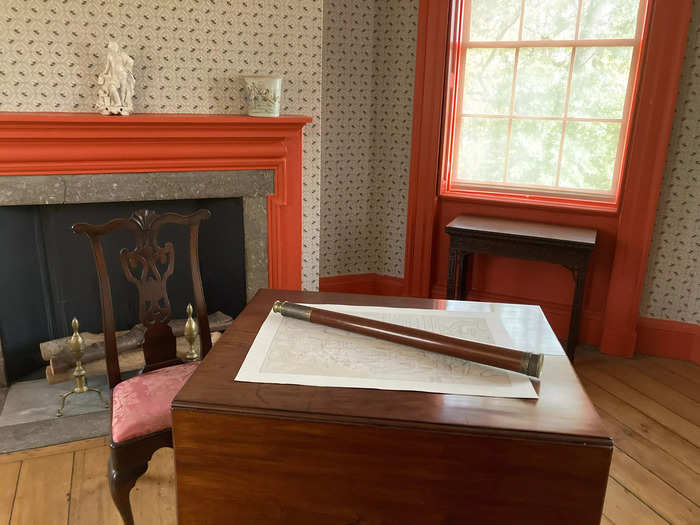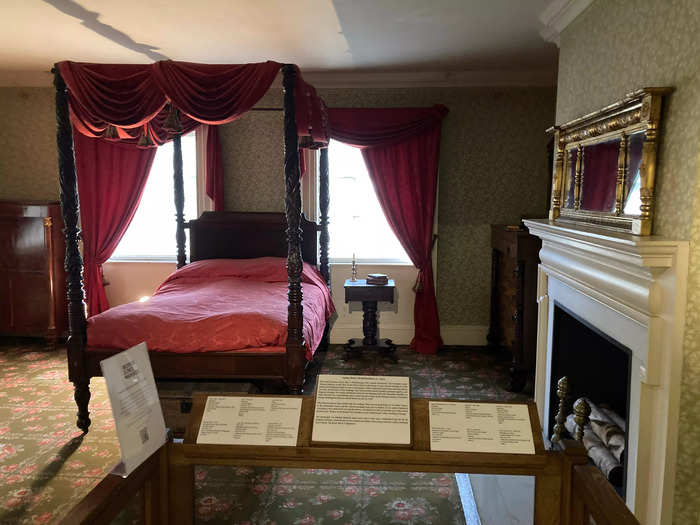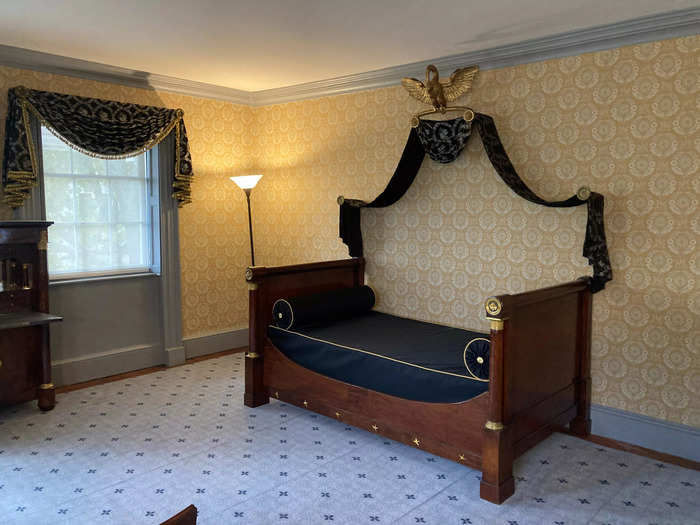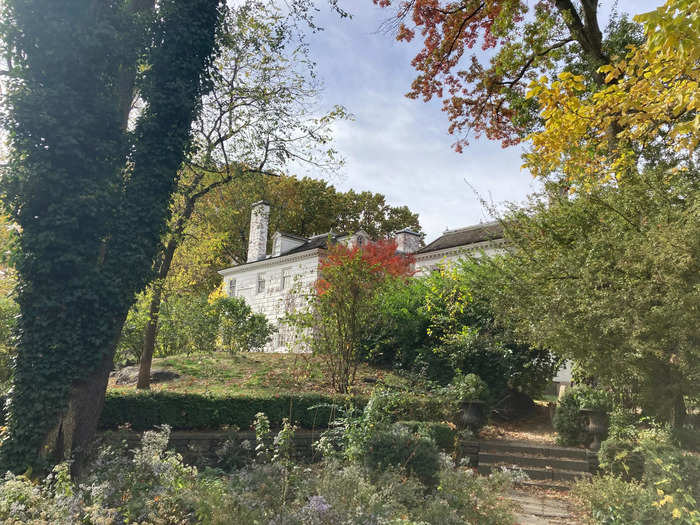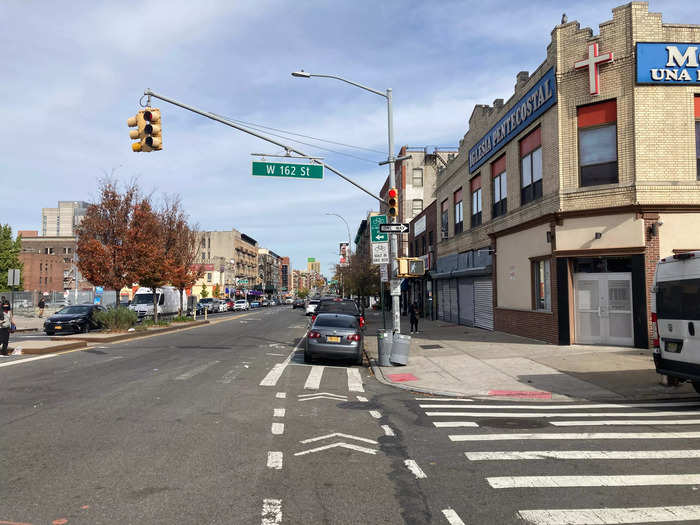The historic Morris-Jumel Mansion in New York City.SeanPavonePhoto/Getty Images
- Built in 1765, Morris-Jumel Mansion is the oldest surviving residence in Manhattan.
- George Washington spent time there during the Revolutionary War, and Aaron Burr married its owner.
Morris-Jumel Mansion is the oldest surviving residence in Manhattan.
The historic home was built in 1765 by Colonel Roger Morris, a Loyalist who returned to England when the Revolutionary War broke out.
During the war, George Washington used the site as his military headquarters during the Battle of Harlem Heights. It was then purchased by Stephen Jumel, a wealthy French merchant, in 1810.
After Jumel died in 1835, his widow Eliza married former vice president Aaron Burr, though the couple divorced a few months later.
Today, the mansion is located in what is now New York City's Washington Heights neighborhood in upper Manhattan. I toured the historic home in 2022 to learn more about its fascinating history.
Morris-Jumel Mansion is located just off 162nd Street in Manhattan.
The Morris-Jumel Mansion. sangaku/Getty Images
Self-guided tours are available Thursday through Sunday and cost $10. Tickets can be purchased through the Morris-Jumel Mansion's official Eventbrite page.
It is part of the neighborhood's Jumel Terrace Historic District, which also features historic homes on Sylvan Terrace across the street from the mansion.
Historic homes on Sylvan Terrace in Manhattan. Talia Lakritz/Business Insider
The cobblestone street outside the Morris-Jumel Mansion was originally built for horse-drawn carriages entering and exiting the home. Now called Sylvan Terrace, the street's wooden townhouses were built in 1862.
Walking into the Morris-Jumel Mansion felt like stepping back in time.
The entrance to the Morris-Jumel Mansion. Talia Lakritz/Business Insider
The City of New York purchased the Morris-Jumel Mansion in 1903 and turned it into a restored museum.
While I was amused to find that the entrance to the historic home featured a Ring doorbell, I immediately forgot about the building's modern touches when I stepped inside. I was greeted by a grand entryway with floor-to-ceiling portraits, historic furniture, and fine architecture.
On the first floor, a French parlor off the entryway served as a greeting room for guests.
The French parlor. Talia Lakritz/Business Insider
The parlor also hosted Eliza Jumel and Aaron Burr's wedding in 1833.
Eliza Jumel bought most of the Empire-style furniture in France.
The parlor. Talia Lakritz/Business Insider
The Jumels were rumored to have known Napoleon Bonaparte while residing in France.
Further into the first-floor hall, a floor-to-ceiling portrait depicted Eliza Jumel and her grandchildren.
A portrait of Eliza Jumel and her grandchildren. Talia Lakritz/Business Insider
The portrait was painted by Alcide Carlo Ercole in 1854.
The dining room featured a replica of the original patterned wallpaper that the Jumels sourced from France in 1825.
The dining room. Talia Lakritz/Business Insider
The "Draped Cone" pattern was produced by the French wallpaper firm Zuber beginning in 1797.
One of the most stunning parts of the house was the Octagon Room on the first floor.
The Octagon Room. Talia Lakritz/Business Insider
Designed by the home's first owner, Roger Morris, it is thought to be the first octagon-shaped room built in the American Colonies. The shape was common in British garden structures because it allowed for breezes to cool off the room.
The 1833 painting of Eliza Jumel in the Octagon Room shows her seated on the same ornate sofa that remains displayed in the room today.
A portrait of Eliza Jumel at the Morris-Jumel Mansion. Talia Lakritz/Business Insider
The room's original cloud wallpaper was custom-made by Atelier d'Offard. The reproduced version in the present-day museum is based on an 1815 pattern from the Musée des Artes Décoratifs in Paris.
Even the staircase leading down to the kitchen featured an artifact of historical significance.
Stairs to the basement. Talia Lakritz/Business Insider
An exposed beam uncovered during a 2001 restoration project featured individual notch marks that indicated skilled labor done by hand — likely by enslaved individuals.
The basement kitchen contained the original fireplace, hearth, and oven from the 18th century.
The kitchen. Talia Lakritz/Business Insider
The basement used to also feature wine and food cellars, and possibly housing for the staff and enslaved people who worked there.
The lobby on the second floor had cannonballs from the Revolutionary War on display.
Revolutionary War cannonballs on display at the Morris-Jumel Mansion. Talia Lakritz/Business Insider
The cannonballs were excavated from upper Manhattan.
Upstairs, what the Morris family used as a parlor became George Washington's war room in 1776.
George Washington's former military headquarters. Talia Lakritz/Business Insider
The room's elevated location and many windows proved a helpful military advantage. It was in this room that Washington strategized for the Battle of Harlem Heights, which helped turn the tide of the Revolutionary War.
Lin-Manuel Miranda spent time writing his hit musical "Hamilton" in Aaron Burr's former bedchamber.
Aaron Burr's bedchamber. Talia Lakritz/Business Insider
Burr didn't live at the mansion for long — Eliza Jumel filed for divorce from Burr after four months. Burr died the day the divorce was finalized in 1836.
Eliza's bedchamber was decorated with more Empire-style French furniture.
Another bedroom. Talia Lakritz/Business Insider
Eliza used to claim that her sleigh bed was once owned by Josephine Bonaparte, though that has since proven false.
After concluding my tour of the mansion, I explored the surrounding grounds.
The grounds of the Morris-Jumel Mansion. Talia Lakritz/Business Insider
The grounds are open to the public even when the mansion itself is closed. A few people were there walking their dogs, and there were a few benches that would make great spots to sit and read.
I couldn't believe that such an expansive, historic mansion was located just steps from the subway's 163rd Street stop in New York City.
Present-day New York City, steps from the Morris-Jumel Mansion. Talia Lakritz/Business Insider
The Morris-Jumel Mansion is definitely worth a visit to see some incredible architecture and transport yourself back to the early years of the United States.

